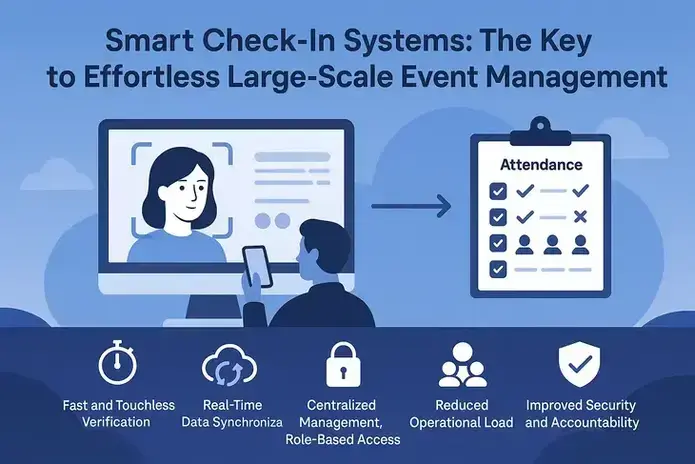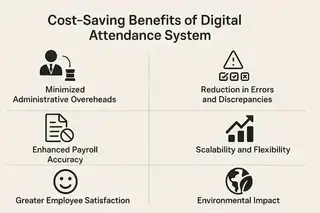Smart Check-In Systems: The Key to Effortless Large-Scale Event Management
Published: July 22, 11:18 AM

In an era of fast-paced execution and high attendee expectations, managing large-scale events with outdated check-in methods is no longer sustainable. Traditional, manual approaches—such as physical registers, ID verification, and paper-based processes—often create more problems than they solve.
Delays, human errors, impersonation risks, and lack of centralized data not only slow down operations but can significantly damage the professionalism and efficiency of any event.
The Challenges of Traditional Check-Ins
Let’s face it—manual check-ins might work for small-scale events, but when managing hundreds or thousands of participants, the flaws quickly become evident:
- Time-Consuming Processes: Long queues and manual verification slow down entry, leading to frustration among attendees and staff.
- Human Error:Typos, missed entries, and mismatched data are common and often go unnoticed until it’s too late.
- Impersonation Risks: Physical ID checks are vulnerable to security loopholes.
- Poor Visibility: Without real-time data, event organizers can’t track who’s in or out, making decision-making slow and uncertain.
- Scalability Issues: As the number of attendees grows, manual systems break down under pressure.
These limitations don’t just affect logistics—they compromise the credibility and success of your entire event.
A Smarter Way Forward: Intelligent, Touchless Check-Ins
Modern problems require modern solutions. With the rise of AI-powered facial recognition and digital check-in systems, events can now be managed with greater ease, speed, and accuracy.
Here’s how intelligent check-in systems redefine event execution:
1. Fast and Touchless Verification
Face recognition systems verify identities in seconds, ensuring smooth and contactless entry—perfect for today's hygiene-conscious environments.
2. Real-Time Data Synchronization
Attendance data is instantly updated and synchronized across all event touchpoints. This eliminates redundancies and ensures that every stakeholder has access to accurate, up-to-the-minute information.
3. Centralized Management, Role-Based Access
Organizers, coordinators, security staff, and auditors can access event data securely based on predefined roles. This reduces confusion and improves data security while allowing smooth collaboration between teams.
4. Reduced Operational Load
By minimizing manual tasks, these systems free up staff to focus on higher-value responsibilities such as guest experience, content delivery, and event flow management.
5. Improved Security and Accountability
Every check-in is digitally logged, providing a clear audit trail for future review. This ensures greater accountability and can be essential for compliance, especially in government and corporate environments.
Who Benefits?
This technology is not just for tech expos or corporate summits. It’s proving equally effective in:
- Government training programs and audits
- Corporate seminars and annual meets
- Educational conferences and student onboarding
- Healthcare and compliance workshops
- Trade shows, expos, and community gatherings
Wherever there’s a need to track, verify, and manage participants—smart check-in systems are making a difference
Future-Ready Event Management Begins Now
The transformation in event management isn’t just about going digital—it’s about working smarter. By eliminating friction points, increasing transparency, and reducing operational stress, intelligent check-in systems are quickly becoming the new standard for modern events.
If your organization regularly hosts events and seeks better efficiency, accuracy, and user experience—it’s time to move beyond paper sheets and slow processes.
Ready to revolutionize how your events run?
Adopt a smarter approach and turn every event into a success story—organized, secure, and seamless from the very first check-in.
Top Blogs
Published: April 01, 2025

Cost-Saving Benefits of Transitioning to a Digital Attendance System
Published: March 18, 2025

Enhancing Workplace Security with an Advanced Visitor Management System
Published: March 04, 2025

The Environmental Impact of Digital Attendance Systems
Published: Feb 04, 2025

The Future of Remote Work: AI Attendance Solutions for Distributed Teams
Published: Jan 23, 2025

How Smart Devices Are Changing the Landscape of Attendance Tracking
Published: Jan 08, 2025

Why Real-Time Attendance Monitoring is Crucial for Operational Efficiency
View All
